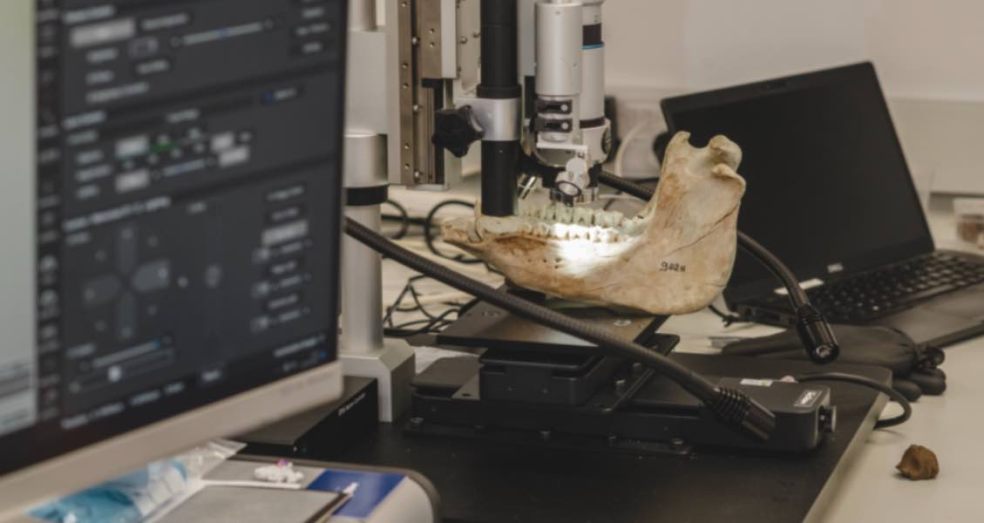
University of Exeter to establish new collections facility to safeguard archaeological remains
A new facility that will offer storage of physical remains from ancient humans, animals, and plants to help ease the pressure on museum archives that are running out of space is to be established at the University of Exeter.
The Biocultural Heritage Information in a Virtual Environment (HIVE) facility will offer secure storage of scientifically important materials and create a new database of digital 3D files and analytical data to preserve the record of materials subjected to scientific destructive analyses.
The development will open archaeological records to researchers around the globe and lead to new discoveries about human interactions with the natural world from otherwise lost biocultural assets.
The establishment of the Biocultural HIVE has been made possible by a grant from the UKRI Arts and Humanities Research Council (AHRC), one of 31 projects totalling £37m that are aiming to grow the UK heritage economy and safeguard heritage for future generations.
Among other projects to receive funding from the Research Infrastructure for Conservation and Heritage Science (RICHeS) programme include one focused on conserving world-renowned artwork at the Tate, and another that will harness cutting-edge equipment to protect UK film and video collections at the BFI.
Professor Naomi Sykes, Head of the Department of Archaeology and History, and co-lead for the project, said: “The funding will enable the University to develop state-of-the-art environmentally-controlled storage at a time when we are seeing museum collections being impacted by a crisis of curation. This includes materials being refused access to archives or existing artefacts being disposed of, sometimes without record. This poses a significant threat to our biocultural heritage and the knowledge we can potentially learn of human interaction with the natural world.”
Thanks to the RICHeS grant, the University will be able to upgrade and expand its physical archive space on the Streatham campus, and facilitate the creation of a new laboratory where researchers can study items housed in the collection.
It will also fund the open-access digital repository where 3D files and analytical results will be stored to ensure that any materials and artefacts subject to destructive analysis – such as proteomics, DNA and isotope testing – will be preserved in a digital realm.
The new facility is scheduled to be completed by the summer of 2026, and would be managed by a professional member of staff with a remit to liaise with museums and archaeologists.
“Our hope is that Biocultural HIVE brings about a step-change in systematic, open-access recording of all destructive analyses on archaeological remains,” adds Dr Catriona McKenzie, fellow co-lead on the project. “Our vision is that a new norm is established, whereby prior to destructive biomolecular analysis, everything is 3D modelled and those models and scientific results are input into the Biocultural HIVE database. This will make digital datasets widely accessible to those working across the heritage science sector for future research and will inspire a new generation of researchers.”
The RICHeS programme is funded by an £80 million investment from the UKRI Infrastructure Fund and was formally launched at an event at the Science and Technology Facilities Council’s Daresbury Laboratory, one of the UK’s most vibrant scientific hubs.
AHRC Executive Chair, Professor Christopher Smith said: “The UK has a rich and unparalleled cultural heritage and is a global leader in the science of heritage conservation. By investing in heritage science, we are not only unleashing new understanding about our cultural assets but boosting a world-leading heritage economy that will benefit us all.
“With 31 sites across all 4 devolved administrations and a network of 117 partners in three continents, RICHeS is UKRI’s largest distributed infrastructure and an undisputed world-first. It is an example of how AHRC works at the heart of UKRI to drive interdisciplinary science which benefits citizens, society and the economy.”

















